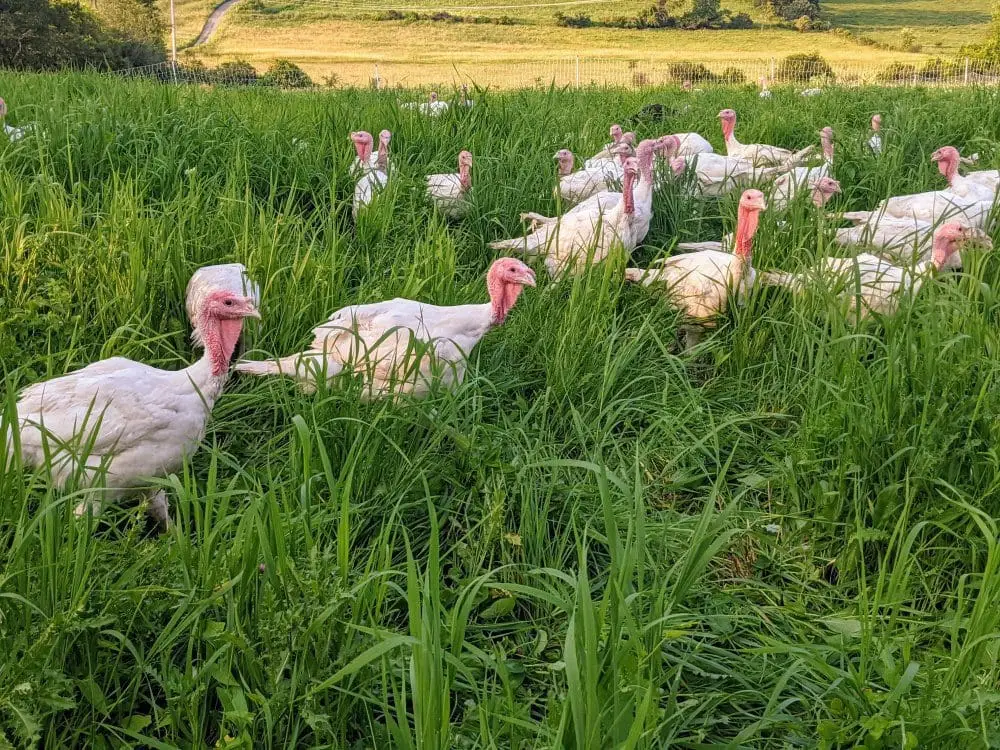It doesn’t have the current buzzword recognition like “regenerative” or “pasture raised”, but I like talking about our farm as a Peripatetic Pasture Farm.
The biggest problem with the word peripatetic is that most people don’t know what it means. Here’s the definition, if you haven’t encountered it before:
Peripatetic (adj): Traveling from place to place, in particular working or based in various places for relatively short periods.
If you watch wild animals you’ll notice that they never stay in one place for very long. The twin pressures of finding the next good bite of food and the fear of predators keep them moving. They are peripatetic. This pattern of movement is seen whether the animals are rabbits moving through residential backyards or large bison herds migrating seasonally across hundreds of miles of rangeland. Since animal movement and migration is a critical ecosystem process, we want to ensure our farming emulates this.
Agriculture, even back in the “good old days” before industrialization, has had trouble with animal movement. The problem really became exacerbated with the invention of barbed wire in the 1870s. Before barbed wire, fencing a whole farm with wood fences was prohibitively expensive. Stone fences and hedges usually don’t keep a group of animals contained for long. So for most farms, except for a small area near the barnyard for the farm horses and maybe a few milk cows, the rest of the livestock didn’t spend much time fenced in. In order for sheep, goats, or cattle to graze without wandering a person stayed with them, herding them to fresh grazing for the day. But barbed wire was a revolutionary product, a disruptive technology. It allowed large fields to be fenced economically. Suddenly nobody needed to spend the day watching the flock or herd. Farmers and ranchers quickly discovered how easily they could fence the stock into a field, leaving them there all season with no ongoing effort other than a quick daily check on everybody to make sure all was well.
Placing a herd of livestock in a pasture and leaving them there turned out to be a huge labor savings, but the labor savings incurred some hidden costs, with the land paying for these costs. Animals in one place for a long time imbalance the pasture ecosystem. They overuse their favorite areas. Overgrazed ground becomes prone to compaction or erosion. Animals congregate in wet areas on hot days, leading to silting and mud in wetlands and ponds, and streambank erosion on waterways. Over time, this pattern degrades the land resources and the wildlife habitat, while also gradually degrading the quality of the pasture for the livestock it was intended for.
Peripatetic farming allows us to keep our livestock constantly on the move. Instead of suffering the consequences of keeping livestock penned up in the same place all year, we let our land experience a more natural state of ebb and flow. The grass grows, the cattle move through, the grass grows again. Peripatetic patterns allow the plants to recover between grazings, so they never lose their root mass or expose bare dirt to erosion. Water resources remain clean and wildlife habitats are preserved. It is a beautiful system, and all quite achievable.
On our farm we have a rule that everything must be movement-oriented. We move our grass fed beef herd to fresh grass every morning. We move our pasture raised chickens to a new pasture every second evening. And our turkey flock moves to a new pasture every three days. These intervals are related to the size of the groups of animals we raise and the area we give them each time. For other farms and in other situations the movement requirements may be different, but I am persuaded that incorporating some sort of consistent peripatetic practice is a fundamental aspect to farm land stewardship.
What do you think? Can we make Peripatetic Pasture Farming the next big farming buzzword?

